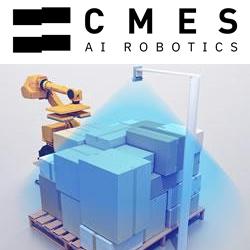OctoMap 1.4 and updated octomap_mapping stack
The main new features since the latest stable 1.2 release are a new generalized IO functionality and file format for octrees, support for per-voxel color information in a specialized tree class (e.g. from the Kinect) and full support for Linux, Mac OS and Windows (the latter still experimental). The API remained mostly unchanged.
Announcement from Armin Hornung, Humanoid Robotics Lab, Uni Freiburg
I'm pleased to announce the release of OctoMap 1.4, along with the updated octomap_mapping ROS stack for electric (see octomap.sf.net/ and ros.org/wiki/octomap_mapping). The updated viewer and visualization library "octovis" is available separately in the octomap_visualization stack.
The main new features since the latest stable 1.2 release are a new generalized IO functionality and file format for octrees, support for per-voxel color information in a specialized tree class (e.g. from the Kinect) and full support for Linux, Mac OS and Windows (the latter still experimental). The API remained mostly unchanged.
v1.4: 2012-02-22
===================
- New generalized file IO for all kinds of OcTrees to .ot files. The updated
file format requires a conversion of your old bt and ot files with the
"convert_octree" tool. bt files are read and written as before.
To write the general .ot file format use tree.write(...) and read it with
AbstractOcTree::read(...) as factory (dynamic_cast to the correct class
afterwards).
- New ColorOcTree class to store color in addition to occupancy
(e.g. from Kinect), with visualization in octovis
- New map collections of octrees (hierarchical octree maps, experimental)
- Support for Linux, Mac OSX, and Windows
- enhancements and fixes in changeDetection
- minor fixes and unit tests added
Featured Product

CMES - AI-Powered 3D Robot Vision
Powered by AI, CMES Robotics enables 3D vision for factory robots. CMES AI vision software enables robots to recognize unstructured, flexible, or deformed objects, pick them up, and loading and unloading. CMES Vision software has been deployed worldwide for random palletization and depalletization along with void filling applications. CMES Robotics automates your warehouse, logistics, and supply chain. For more information, please visit: cmesrobotics.com or email info@cmesrobotics.com.
